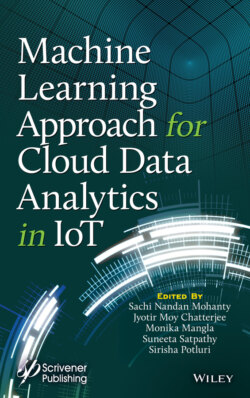Читать книгу Machine Learning Approach for Cloud Data Analytics in IoT - Группа авторов - Страница 84
3.2 Related Work
ОглавлениеThis section presents the background and related work of ML in the context of retail industries. The employment of ML in retail industries has started since its inception [9]. However, the emergence in ML has further boosted its employment in this domain during the past decade. The major employment of ML approaches is for prediction of sales, revenue and stock requirement in the retail industry. Authors in [4] established that the predictive model is generally suitable for estimating and predicting future observations and assessing their predictability levels.
Authors in [10] determined the possibilities of integrating big data in the retail industry. Authors discussed the usage of Bayesian approach and predictive analytics in the context of the retail industry. Authors also mentioned the concern for data privacy in retail industry. This research was taken one step ahead by authors in [11] who have used different ML techniques to predict the sales. In [11], it is observed that the normal regression techniques when integrated with boosting techniques have observed better results in comparison to mere regression algorithms. Using the same principle, authors in [12] also used ML approaches to predict future sales using the historical sales data. Authors discussed various approaches for the sales prediction and finally concluded that gradient boost algorithm is the best fit model for this scenario as it achieves highest accuracy and efficiency. The authors in [13] also implemented a stacking approach for regression ensemble to further improve prediction for sales. Authors in [14] proposed a model using ML techniques to optimize pricing on a daily basis. All these predictive models can be employed to predict demand and sales of products in future. Authors in [15] presented a regression model using regression trees for each department to predict future demand. The proposed model is authenticated in terms of its efficiency using least squares regression, principal components regression, and other similar regressions. Similarly, authors in [15] used historical data and Rue La La’s expertise for building size curves for each product p which represents the percentage of product demand for each size of p. Here, authors also attempted a price optimization problem with an object to set a prime for each product so as to maximize the revenue.
Authors in [16] proposed a framework to perform requirement analysis in the retail industry. The proposed framework consists of three modeling views: business view, analytics design view, and data preparation view. These views collectively perform data preparation activities. The authors in [17] employed descriptive analytics in relation to data mining for decision-making. Here, it is worth mentioning that predictive data analytics employs deterministic optimization techniques such as the decision tree method.
